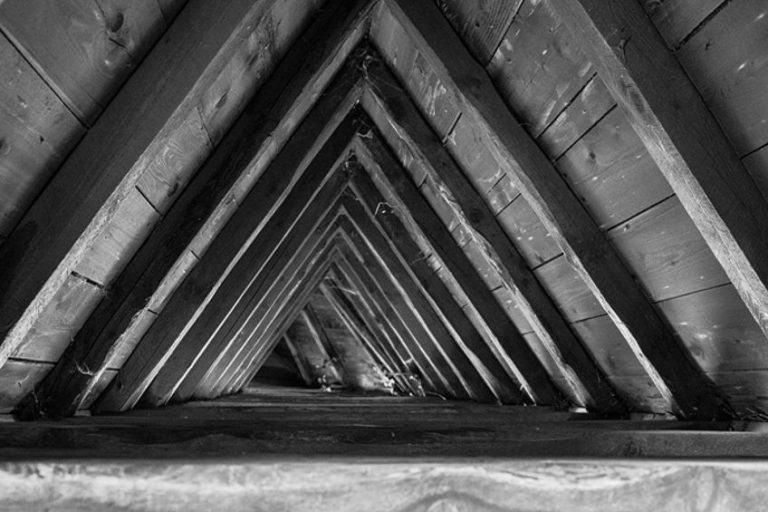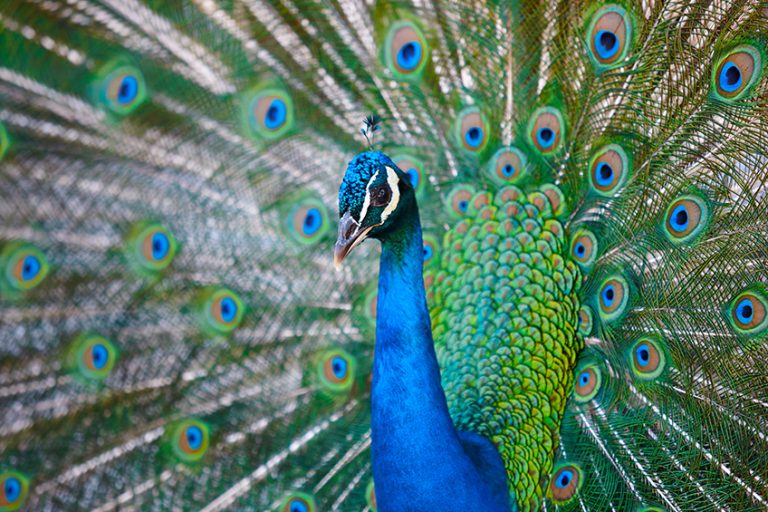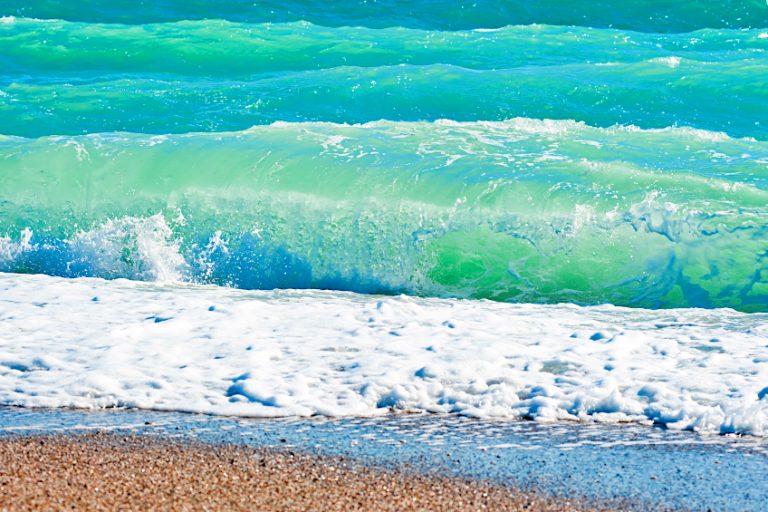Cool Colors – What Are Cool Colors and How Can You Use Them?
Color is the most important not only in painting but also in your life. Cool colors are especially important as they are used to create dimension, shadows, and contrast. Cool colors invoke images of the sky, ocean, and nature, and induce feelings of calmness and serenity in your art and home, but what are cool colors exactly? Find out how cool colors are created and their impact on your art and beyond.
Cool Colors Explained
Cool colors are associated with ideas of harmony, reliability, and trust. They tend to evoke feelings of tranquility and refreshment whether they are painted on your canvas or walls. Understanding what cool colors are and how they are created and used is fundamental to being able to not only identify them but also utilize them effectively.
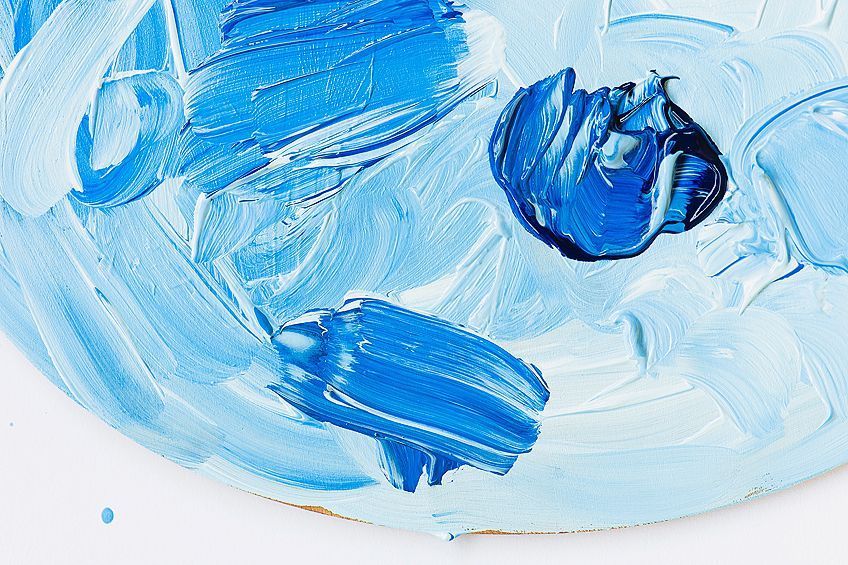
The Color Wheel
The color wheel provides a fantastic tool for understanding color temperature. The basic color wheel model usually consists of 12 different color hues which are roughly grouped into warm and cool colors. It is important to note that hue refers to the actual color and its position on the color wheel. Hue does not tell you anything about that color’s saturation or value, which is its intensity or how light or dark it is.
The color wheel clearly illustrates the relationship between the primary and secondary colors, as well as the intermediate and tertiary colors that they form.
The primary colors consist of three colors, namely red, yellow, and blue. By mixing two primary colors together in equal parts, you can create the secondary colors on the color wheel, which consist of orange, green, and violet. Mixing a primary and secondary color together creates intermediate colors, while tertiary colors are the result of mixing together two secondary colors.
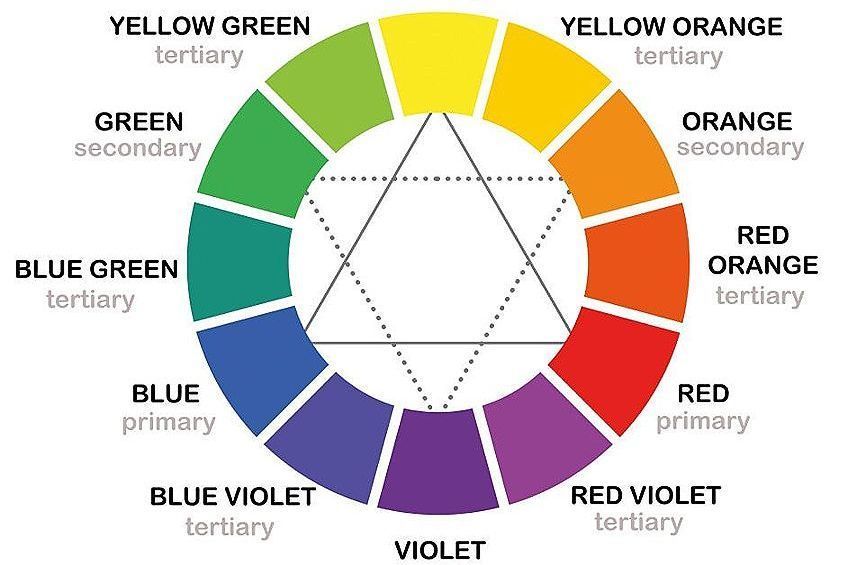
Black and white are not considered true colors and so are not included on the color wheel. Simply speaking, black is the absence or complete absorption of color, while white is the complete reflection of all visible colors. Traditionally, gray is created by mixing white and black together, however, gray can also have different undertones if another color is mixed into it. Brown and other earth tones are the results of mixing together all the primary colors. Black, white, gray, and earth tones are all considered neutral colors.
What Are Cool Colors?
Now that you know the basics of the color wheel and how colors are formed, we can delve deeper into what makes a color a cold color. The most common cool colors definition is any color that falls within the blue, green, and violet hues as well as all the intermediate and tertiary colors that they can form. When thinking of cool colors, it is helpful to imagine cool subjects such as water, clear skies, and snow and the colors that go with them.
In contrast, warm colors conjure warm imagery of fire and sunlight, and so warm colors consist of orange, red, yellow, and their combinations.
How Are Cool Colors Made?
Blue is the only primary color in the cool color group and therefore all cool colors contain some blue or have a blue undertone. Hexadecimal or hex codes are used to communicate the exact color you are referring to whilst also giving you an idea of the proportions of the colors used to create that color. It can therefore be useful to look up the hex code of your color if you are trying to determine if it is a warm or cool color. People often ask to make a color cooler when instead they would actually like to make the color darker or less saturated. If you are trying to create cool tones, adding blue to any color will make them cooler.
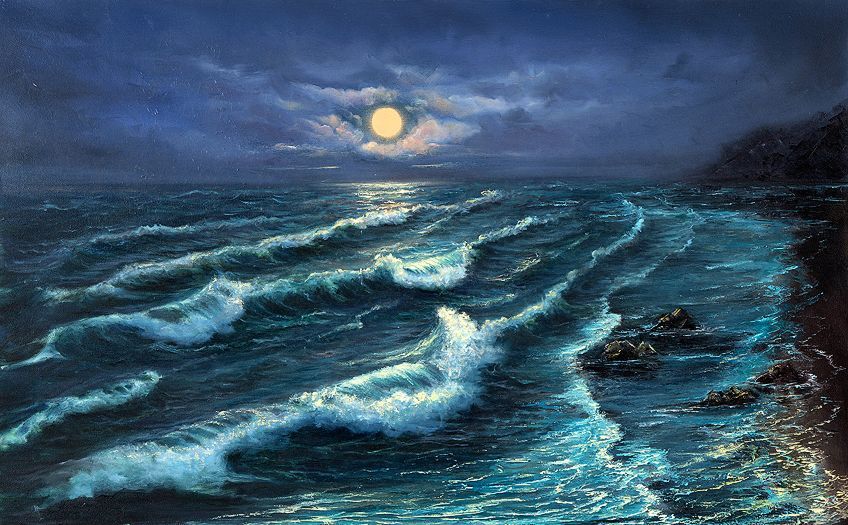
Neutrals also interact with color temperature. Black and white may not be true colors but do have some properties of color temperature. White tends to have a cooling effect whereas black has a warming effect. White can also be mixed with a hint of blue undertone making them cool. Gray tends to absorb the color properties of any neighboring colors so can enhance cool colors if surrounded by them. The temperature of brown and earth tones varies depending on the ratio of colors used when mixing them. Using predominantly cool hues will result in cool neutrals and vice versa.
Cool Colors vs. Warm Colors
We have covered that cool colors consist of green, violet, and blue and warm colors consist of red, orange, and yellow. Some, however, do not agree with this cool colors definition. One of the main reasons for this is that colors do not exist by themselves and therefore color temperature is largely relative and dependent on any colors that may surround it. A color can be seen as either warmer or cooler when comparing them to its neighboring colors.
A bias is the degree to which a color leans towards another primary or secondary color.
Red, for example, can have a yellow bias or a violet bias. Colors from within the same hue, such as yellow, can also be warmer or cooler than one another. Yellow is a warm color but a cool yellow would be a yellow that has a green bias compared to a warmer yellow with a red bias. In this way, cool versions of warm colors are often made by mixing the warm color with a small amount of a cool hue.
The Importance of Color Temperature in Art
Color temperature can be an irreplaceable tool in your art if you know how to use it. One of the fundamental properties of cool colors is that their wavelengths are shorter than warm colors. Because of this, cool tones make things seem smaller than parts painted in warm tones. Cool tones are therefore excellent to use to create illusions of form and scale. If your painting seems correct but still feels disproportionate, you can make use of cool colors in areas that feel too big to create an illusion of them being smaller.

Cool colors can affect not only the look of your work but also the mood, so knowing how to use them is important. You can make use of the psychological effect of cool colors in art to invoke certain emotions within your paintings. For example, cool colors can be paired with neutrals to create a landscape or scene with a sense of serenity or calm but can also be layered to create a gloomy feel.
Not only can cool colors be paired with neutrals, but they can also be used as neutrals themselves when paired with sharper colors. Predominantly cool tone pallets often benefit from the inclusion of complementary colors as accents. .
Complementary colors are those that are directly opposite each other on the color wheel
Cool Colors vs. Warm Colors in Art
Warm and cold colors can interact with each other in fantastic ways in your art. A cool blue can be used to create a subtle contrast when used against a warm blue. This can be used in art to subtly separate or define parts of the same object.
Color temperature is also important for creating shadows and highlights. Generally, when the light source is warm, the shadows should be painted in cool tones and vice versa. Improper use of color temperature, by painting an area that should appear cool with warm colors and vice versa, is a common cause of “muddy colors”. If you want to create brilliant colors, you should aim to only mix colors that have similar temperatures.
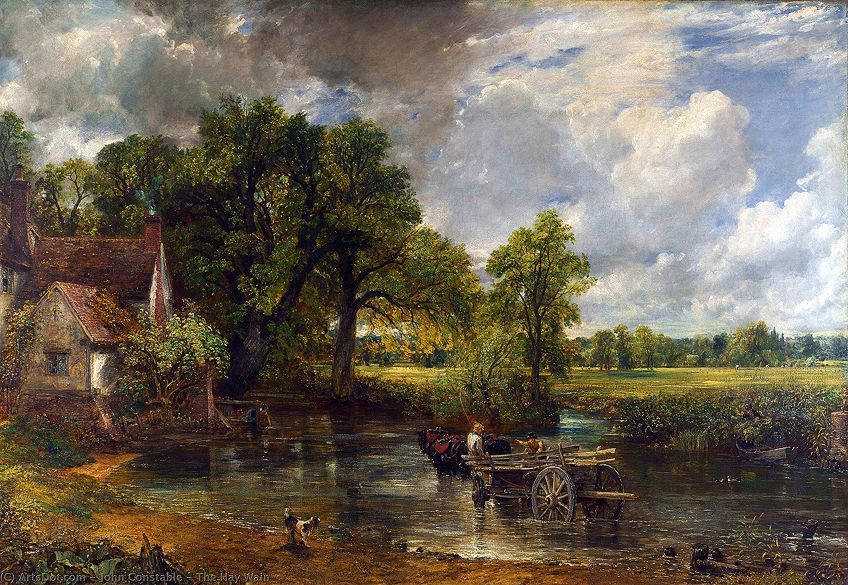
Cool colors make things seem as though they are farther away or retreating and warm colors as though they are closing in. By using warm tones in the foreground and cool tones in the background to create illusions of depth and distance. This is useful not just in landscape pieces, but also in smaller subjects, still life, and abstract pieces.
Although it is important to include warm and cool tones within your art, without choosing a dominant tone your piece may end up feeling confusing. Artists use a concept called “temperature dominance” to prevent this, which sees you choosing one dominant tone for your work and accenting it with small amounts of the other. The most common way to split your color palette is by using the 80:20 rule, where you aim to have 80 percent of your painting in a singular tone with roughly 20 percent of the painting being of the opposite tone. Just remember not to include too many hues in your artwork, even if they are the same tone, as it can be difficult to balance them.
Famous Paintings That Used Cool Colors
Historically, blue has been one of the most used colors in painting. Since all cool colors have blue undertones there are a plethora of famous paintings that have made use of cool colors in art.
The Starry Night by Vincent van Gogh is an oil painting painted in 1889 that uses predominantly blues, greens, and pale-yellow hues. The stars are accented with a warmer yellow to highlight the brightness and make them stand out from the cool background.
The block painting The Great Wave Off Kanagawa by Hokusai (1831) makes use of cool blues and grays throughout and gives the piece a moody, cold feel. The artist has also contrasted these cool tones with a warm cream sky to keep it from being monotone or washed out and is a great example of how warm and cool tones can work together.
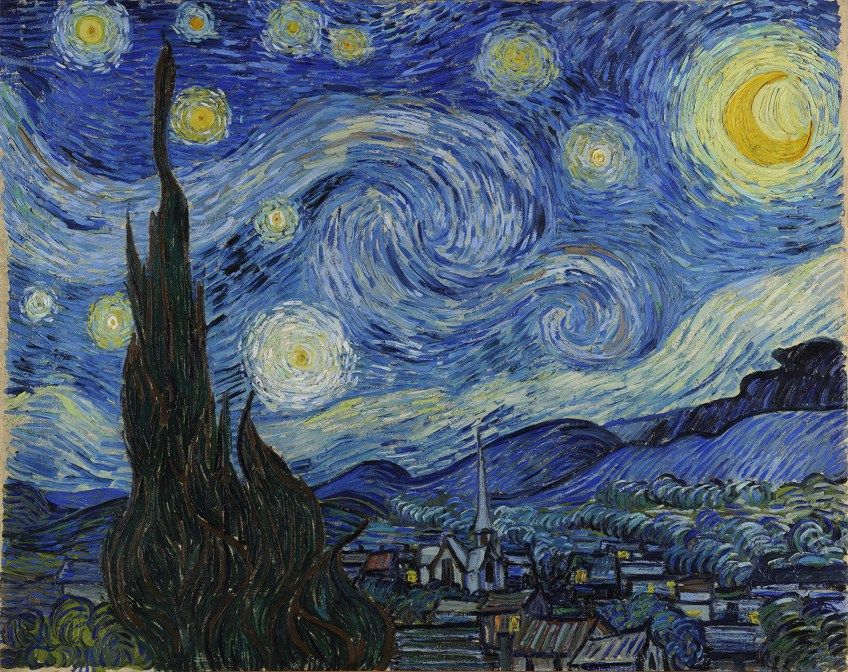
Johannes Vermeer’s 1665 oil painting Girl with a Pearl Earring is another great example of combining warm and cool tones. The artist adds a warm detail, the lips, to a generally cool background, which causes you to focus on them. They also make use of cool colors in shading.
Another Vincent Van Gogh piece painted in 1888, Cafe Terrace at Night, is a great illustration of how to create dimension and balance with cool colors. While using a relatively warm pallet, these warm yellows and oranges in the foreground are complemented with cool blues and complimentary greens in the background and create not only contrast but also depth in this painting.
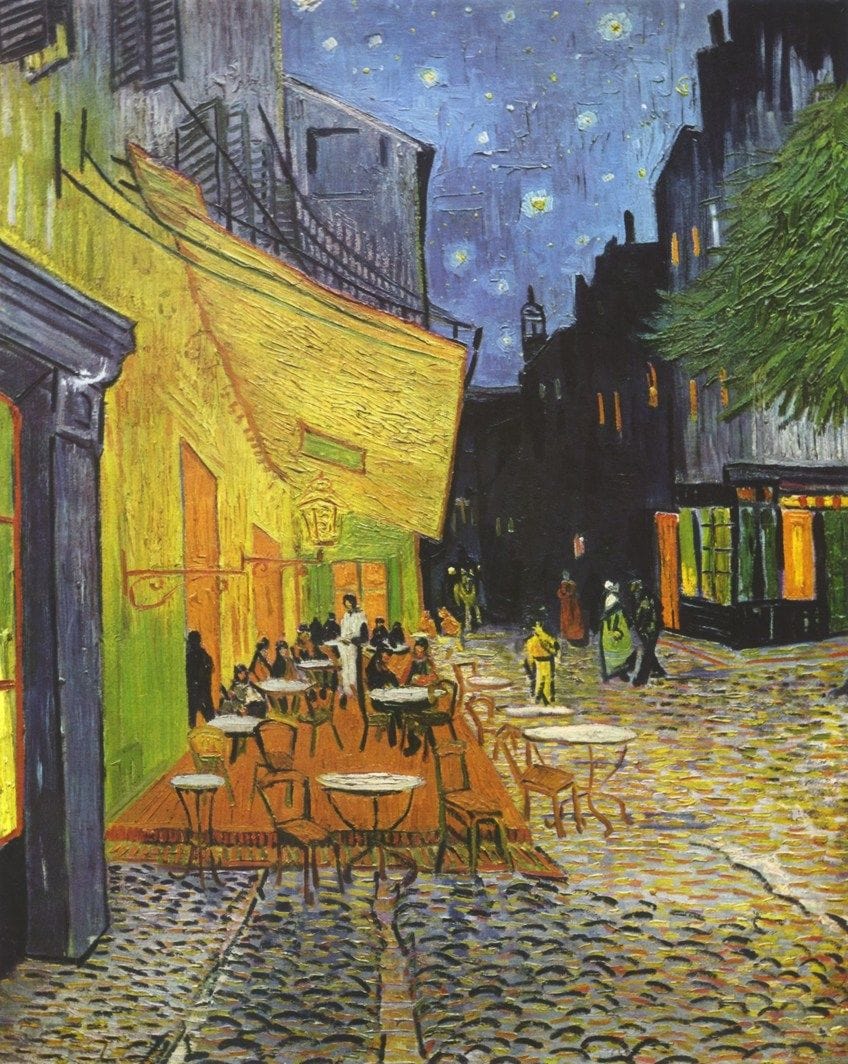
Painted in 1903, The Old Guitarist by Pablo Picasso shows how few warm colors are needed to create contrast in a predominately cold pallet. This contrast is created not only in the colors of the painting but also in the emotions that each part of the piece conveys. The guitar is the warmest part of the painting both literally and figuratively while the cool tones convey the sadness and plight of the artist. This painting is also a fantastic display of how neutral colors can enhance the dominant hue and temperature of the piece overall.
Cool Colors Across the Spectrum
While there are countless different cool colors, we have picked some popular colors across the spectrum that will be great to use in your next piece. We have created a table that includes, not only the cool color names but also their various color codes to make it easy for you to find them.

Blue Tones
Cool color names tend to reference oceans and stormy weather or melancholy moods, which reflects the scenes and feelings artists use them to create. Blue Though is a deep blue hue that can be used to create a moody feel to your piece as seen in Hokusai’s 1831 block painting – The Great Wave Off Kanagawa.
Waiting is a lighter blue hue. This color is great for adding depth to landscapes, such as distant mountains. This effect can be clearly seen in Isaac Levitan’s oil painting Spring in Italy, which was painted in 1890.
| Cool Color Name | Cool Color Hex Code | RGB Cool Color Code | CMYK Cool Color Code (%) |
| Blue Though | #011640 | 1, 22, 64 | 98, 66, 0, 75 |
| Waiting | #8DB0A7 | 141, 176, 167 | 26, 0, 10, 35 |
Green Tones
Although green is already considered a cool color, green tones can be made cooler by adding blue or even added to warmer tones to cool them. Blah is a versatile dark green that is anything but boring. This color is excellent for trees and plants in nature scenes but can also be used to create shadows against other blues and greens in moody landscapes.

Glitter has more of a blue-green tone that is ideal for ocean scenes and clear skies. Although yellow is typically considered a warm color, Yellow Poplar Leaves is a relatively cool tone because of its green undertones. This color can be used with other, warmer yellows as a highlight or to add contrast that that seen in The Starry Night by Vincent Van Gogh.
| Cool Color Name | Cool Color Hex Code | RGB Cool Color Code | CMYK Cool Color Code (%) |
| Blah | #255C3F | 37, 92, 63 | 148, 60, 36 |
| Glitter | #4AB096 | 74, 176, 150 | 58, 0, 15, 31 |
| Yellow Poplar Leaves | #F2DC6D | 242, 220, 109 | 0, 9, 55, 5 |
Violet Tones
Violet’s position between blue and red on the color wheel means that it can look widely different in both tone and temperature, depending on which color it is more biased towards. Nonagon is a blue-violet, which makes it appear not as vibrant as other violets, however, it is the perfect pair to a range of oranges and yellows. This is beautifully demonstrated in A Sunday Afternoon on the Island of La Grande Jatte by Georges Seurat, 1886. Passion That Kills is a striking color that is much warmer than the previous one. This is because this violet has red undertones, making it relatively warmer than Nonagon, which has blue undertones.
Interesting to note is that this hue looks like a relatively cooler red when placed beside a pure red or a red with yellow undertones.
| Cool Color Name | Cool Color Hex Code | RGB Cool Color Code | CMYK Cool Color Code (%) |
| Nonagon | #635274 | 99, 82, 116 | 15, 29, 0, 55 |
| Passion That Kills | #D60257 | 214, 2, 87 | 0, 99, 59, 16 |
Cool Colors in Your Home
Just like on your canvas, color temperature plays a huge role in the look and feel of your living space. Color temperature can affect aspects such as the size, mood, and overall balance of the rooms in your home and office.
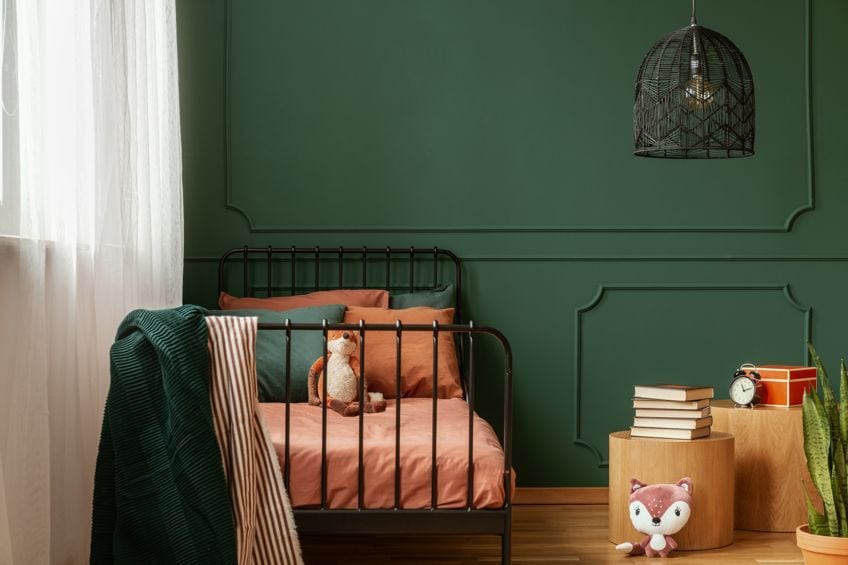
Effect of Cool Colors on Size
Cool tones are great to use in small rooms. Like in paintings, cold colors look like they are receding or retreating and so they make small spaces seem much larger. If you have a small kitchen or living room, it is a good idea to make use of a cool color pallet as warmer tones might make the space feel cramped.
This is because visually, warm colors look as though they are coming closer, therefore they should be reserved for larger rooms to make them feel cozier or more intimate.
Effect of Cool Colors on Emotion
Our mood has been shown to be impacted by color temperature so can be used strategically throughout your space to help you get into the right mindset. Cool colors have a tranquil, calming effect so are great for bedrooms, bathrooms, and any other spaces where you wish to relax. These relaxing properties of cool colors can also aid in concentration so incorporating cool tones into home offices is also beneficial. Warm colors are more stimulating and so are good for living areas, however, if you live in a warm climate you might want to consider going for more cool tones as they give rooms an airy feel and, as the name suggests, have a cooling effect.
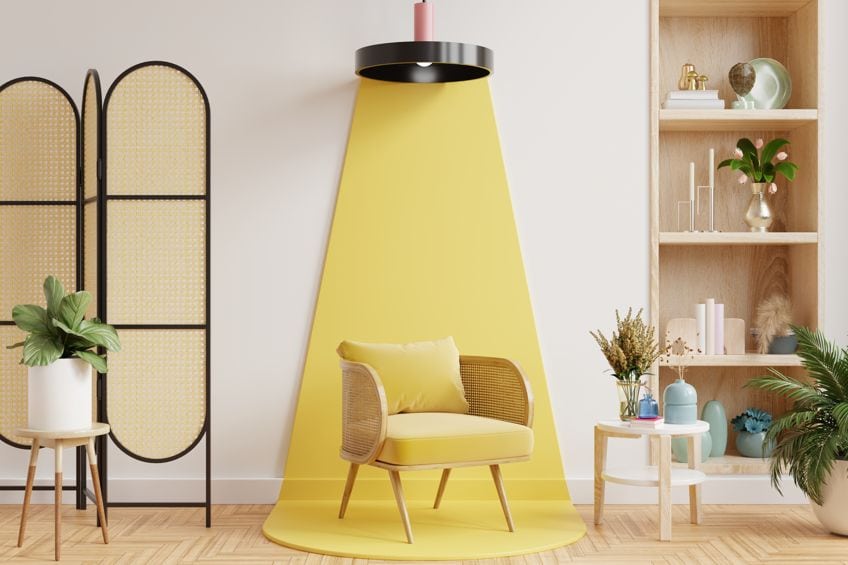
Effect of Cool Colors on Balance
In painting, balancing cool colors and warm colors is important and this remains true in your home. If the dominant color temperature of your room is a cool tone, then be sure to include warm accent pieces for contrast, else the whole space can feel washed out and drab. You can also make use of cool colors in warm rooms as they make it so that the room does not feel stifling. Do not forget to include neutrals in your space as well as these work to enhance your dominant colors.
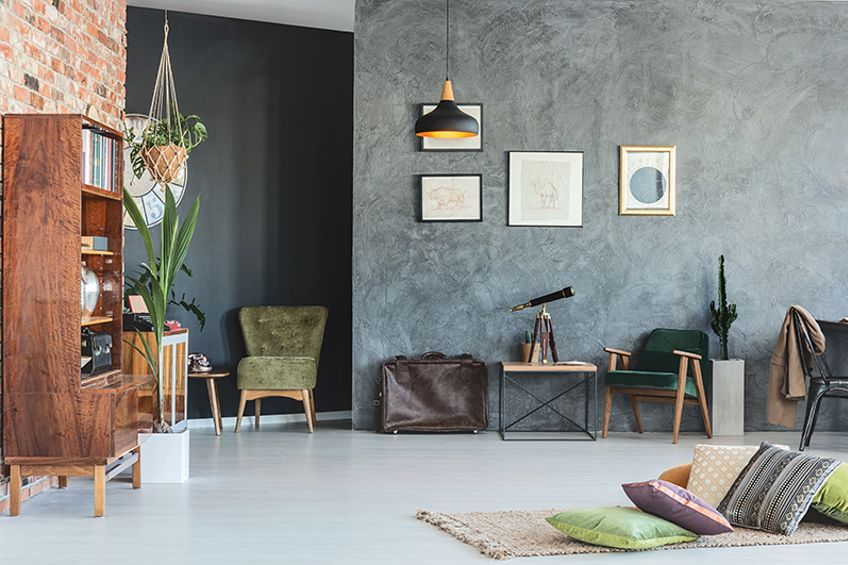
Cool colors can have an array of effects not only on your art but on your space as well. Cool colors are especially important for creating dimension, contrast, and mood in your pieces. Learning how to work with color temperature is a fundamental skill that will improve the look and feel of your art in many ways.
Frequently Ask Questions
What Are Cool Colors and Warm Colors?
The cool color group consists of blue, green, violet, and all their combinations. The warm color group consists of red, yellow, and orange as well as all their combinations. It is important to remember that a color’s temperature is also relative to its neighboring colors, therefore red, which is a warm color, can become a cool red if you add a little blue to it.
Is Gray a Warm or Cool Color?
Gray is considered a neutral color, which means it is regarded as neither warm nor cold. Gray can be made in both cool grays and warm grays. Adding blue to grays will make them cool and give them a steeling appearance. Warm grays with yellow or red undertones can sometimes appear almost beige.
Why Would an Artist Use Cool Colors?
Cool colors can create serene or melancholy moods in your art depending on how they are used. In the same way, they can also give a painting a cold, crisp feel, which is great for icy landscapes. The receding properties of cool colors mean they are essential for the creation of depth and dimension in your piece, and can also be used to create shadows for warm-toned subjects.
In 2005, Charlene completed her Wellness Diplomas in Therapeutic Aromatherapy and Reflexology from the International School of Reflexology and Meridian Therapy. She worked for a company offering corporate wellness programs for a couple of years, before opening up her own therapy practice. It was in 2015 that a friend, who was a digital marketer, asked her to join her company as a content creator, and this is where she found her excitement for writing.
Since joining the content writing world, she has gained a lot of experience over the years writing on a diverse selection of topics, from beauty, health, wellness, travel, and more. Due to various circumstances, she had to close her therapy practice and is now a full-time freelance writer. Being a creative person, she could not pass up the opportunity to contribute to the Art in Context team, where is was in her element, writing about a variety of art and craft topics. Contributing articles for over three years now, her knowledge in this area has grown, and she has gotten to explore her creativity and improve her research and writing skills.
Charlene Lewis has been working for artincontext.org since the relaunch in 2020. She is an experienced writer and mainly focuses on the topics of color theory, painting and drawing.
Learn more about Charlene Lewis and the Art in Context Team.
Cite this Article
Charlene, Lewis, “Cool Colors – What Are Cool Colors and How Can You Use Them?.” Art in Context. July 31, 2022. URL: https://artincontext.org/cool-colors/
Lewis, C. (2022, 31 July). Cool Colors – What Are Cool Colors and How Can You Use Them?. Art in Context. https://artincontext.org/cool-colors/
Lewis, Charlene. “Cool Colors – What Are Cool Colors and How Can You Use Them?.” Art in Context, July 31, 2022. https://artincontext.org/cool-colors/.





